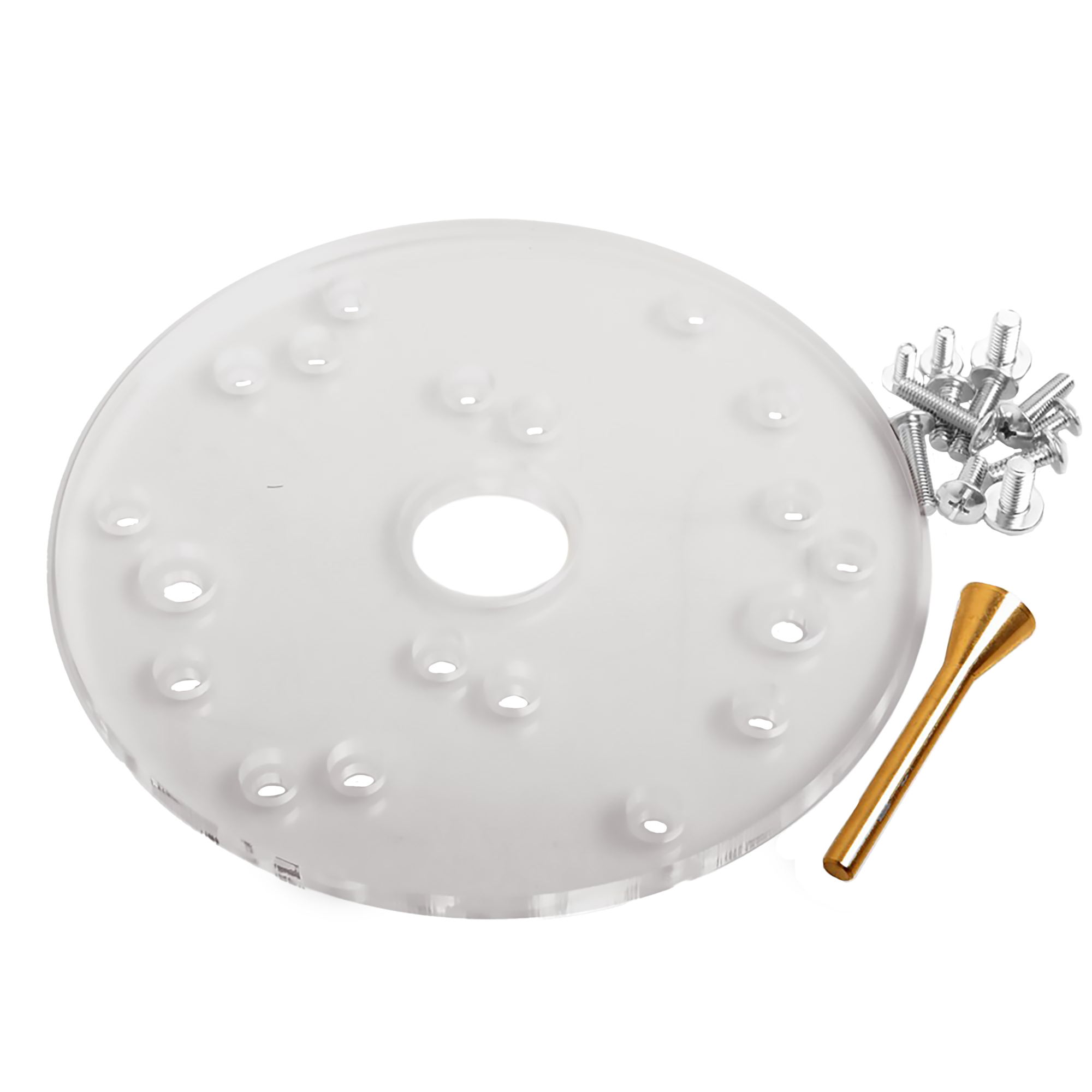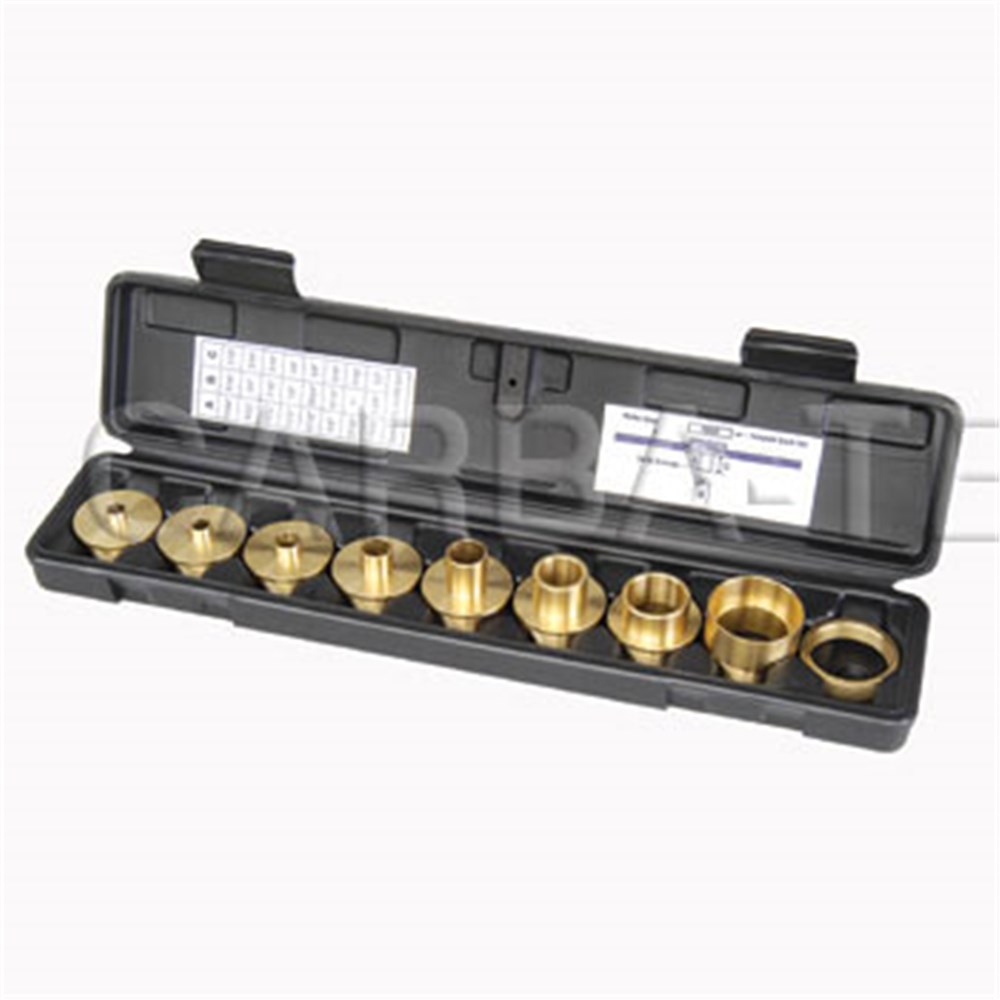Hello All,
Greetings from Queensland - Australia.
I recently bought a Porter and Cable Dovetail Jig 4216 which comes with four different sized threaded template guides. None of these template guides fit either of my two routers. Does anyone know if the Bosch part number RA1100 does actually fit the old Bosch GOF 1300 ACE router?
Details about the Bosch set are as follows ... Template Guide Set RA1128. I found a set of 8 template guides set from Bosch that does especially mention that one of the set, the RA1100 interface piece, which allows the template guide adapter to accept Porter-Cable® and similar common threaded template guides 8 pc. Template Guide Set RA1128. I cannot post the direct hyperlink as it gets blocked by the forum. I found it on Amazon if that helps.
The problem is that In the description of the Template Guide Set RA1128 I could not find any mention of the set being suitable for the Bosch GOF 1300 ACE that I bought attached to a Triton Workcentre 2000 Router Table. I then contacted Bosch Australia and they emailed back that the 8 piece Template Guide Set RA1128 was from America, so they could not provide support for the product here in Australia. Yes Bosch Australia was very, very helpful ... NOT!
If someone in the US of A does have a Bosch GOF 1300 ACE can you please let me know if the Template Guide Set RA1128 does fit my old Bosch router?
Otherwise does anyone on the forum have a Hitachi M12V and have managed to track down a router base adapter that accepts the Porter and Cable threaded template guides.
I have made an adapter for the Hitachi made up of two layers of aluminium. The first layer uses the two adapter plate mounting holes to form the bottom of the adapter plate. This arrangement leaves the Porter and Cable template guide sitting 2.6 mm high above the router's base plate. To counter this I have added a second layer of aluminum plate that allows the Porter and Cable template guide to fit flush.
I hope this home-made adapter is only a temporary measure. I would prefer a properly manufactured template guide holder.
I also have to adapt my Ryobi Plus One 18 volt palm router to suit the two Porter and Cable template guides for the 1/4 inch router bits. Of course the Ryobi does not suit the Porter and Cable templates either!
If all else fails ... if you do have a modern brand of router that has a 1/2 inch or 13 mm (12.5 mm) router shank capacity that does fit the Porter and Cable template guide - without any fuss - can you please post the brand, model number of your router and the brand and model or part number of the adapter kit you may have needed? Unless there was a miracle and the Porter and Cable template guide actually fit your router straight away! Then this would be a good bit of knowledge to have.
Yes - I am somewhat exasperated by the experience so far. Aren't hobbies meant to be fun?
Kind regards
Lionel
Greetings from Queensland - Australia.
I recently bought a Porter and Cable Dovetail Jig 4216 which comes with four different sized threaded template guides. None of these template guides fit either of my two routers. Does anyone know if the Bosch part number RA1100 does actually fit the old Bosch GOF 1300 ACE router?
Details about the Bosch set are as follows ... Template Guide Set RA1128. I found a set of 8 template guides set from Bosch that does especially mention that one of the set, the RA1100 interface piece, which allows the template guide adapter to accept Porter-Cable® and similar common threaded template guides 8 pc. Template Guide Set RA1128. I cannot post the direct hyperlink as it gets blocked by the forum. I found it on Amazon if that helps.
The problem is that In the description of the Template Guide Set RA1128 I could not find any mention of the set being suitable for the Bosch GOF 1300 ACE that I bought attached to a Triton Workcentre 2000 Router Table. I then contacted Bosch Australia and they emailed back that the 8 piece Template Guide Set RA1128 was from America, so they could not provide support for the product here in Australia. Yes Bosch Australia was very, very helpful ... NOT!
If someone in the US of A does have a Bosch GOF 1300 ACE can you please let me know if the Template Guide Set RA1128 does fit my old Bosch router?
Otherwise does anyone on the forum have a Hitachi M12V and have managed to track down a router base adapter that accepts the Porter and Cable threaded template guides.
I have made an adapter for the Hitachi made up of two layers of aluminium. The first layer uses the two adapter plate mounting holes to form the bottom of the adapter plate. This arrangement leaves the Porter and Cable template guide sitting 2.6 mm high above the router's base plate. To counter this I have added a second layer of aluminum plate that allows the Porter and Cable template guide to fit flush.
I hope this home-made adapter is only a temporary measure. I would prefer a properly manufactured template guide holder.
I also have to adapt my Ryobi Plus One 18 volt palm router to suit the two Porter and Cable template guides for the 1/4 inch router bits. Of course the Ryobi does not suit the Porter and Cable templates either!
If all else fails ... if you do have a modern brand of router that has a 1/2 inch or 13 mm (12.5 mm) router shank capacity that does fit the Porter and Cable template guide - without any fuss - can you please post the brand, model number of your router and the brand and model or part number of the adapter kit you may have needed? Unless there was a miracle and the Porter and Cable template guide actually fit your router straight away! Then this would be a good bit of knowledge to have.
Yes - I am somewhat exasperated by the experience so far. Aren't hobbies meant to be fun?
Kind regards
Lionel















